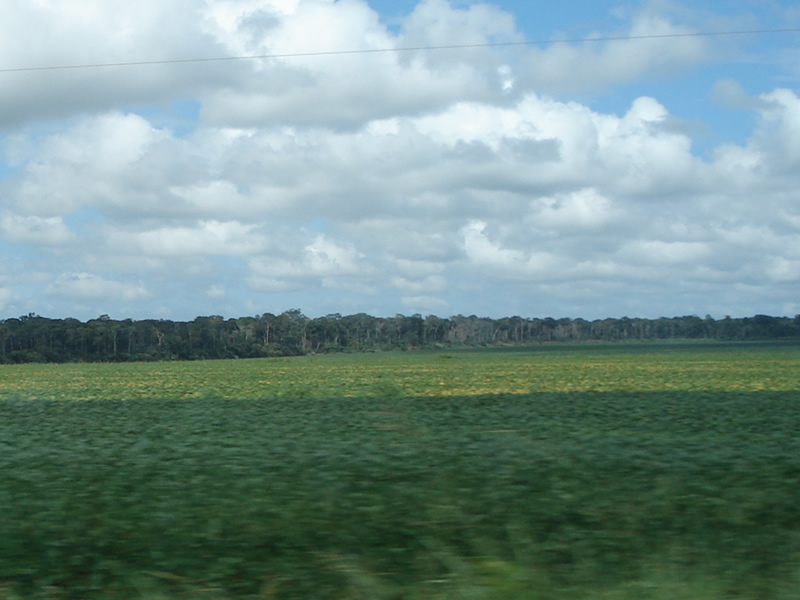|
Bryconops Piracolina
''Bryconops piracolina'' is a small fish that inhabits the waters of Brazil. It is slender and silvery in color, like many fish in ''Bryconops'', but can be distinguished from other members by way of its dorsal fin, which has a black patch of color extending up from the fin-base; congeners usually have light pigment in the dorsal fin, or a brighter color (as in the orangefin tetra, ''B. affinis''). Its specific epithet, ''piracolina'', is in reference to the stream where it was found, the Igarapé Piracolina (which is located in the Rio Madeira, Río Madeira basin). Description ''Bryconops piracolina'' reaches a maximum of roughly 7.1cm (2.8 in) in Standard Length, standard length (excluding the tail fin). This places it slightly to the smaller side of the genus ''Bryconops'' as a whole. Its dorsal fin sports pigmentation along the base that streaks away from the body, which is a unique feature that can be used to distinguish it from its congeners. It lacks Humeral spot, humer ... [...More Info...] [...Related Items...] OR: [Wikipedia] [Google] [Baidu] |
Juliana Mariani Wingert
Juliana (variants Julianna, Giuliana, Iuliana, Yuliana, etc) is a feminine given name which is the feminine version of the Roman name Julianus. Juliana or Giuliana was the name of a number of early saints, notably Saint Julian the Hospitaller, which ensured the name's continued popularity in the medieval period. People with the given name Juliana or Julianna Medieval :''Ordered chronologically'' *Julianna of Paul and Juliana (died 270), Christian martyr during the Aurelian persecution *St. Juliana of Nicomedia (died 304), Christian martyr during the Diocletian persecution *St. Juliana (, a martyr associated with the legend of Saint Cucuphas * Juliana Grenier (died between 1213 and 1216) *St. Juliana of Liège (1193–1252), nun and visionary from Retinnes in Fléron in the Bishopric of Liège, now in Belgium *St. Juliana Falconieri (1270–1341), Italian foundress of the Servite Third Order *Juliana or Julian of Norwich (1342–1416), English anchoress, Christian mystic and theolo ... [...More Info...] [...Related Items...] OR: [Wikipedia] [Google] [Baidu] |
World Register Of Marine Species
The World Register of Marine Species (WoRMS) is a taxonomic database that aims to provide an authoritative and comprehensive catalogue and list of names of marine organisms. Content The content of the registry is edited and maintained by scientific specialists on each group of organism. These taxonomists control the quality of the information, which is gathered from the primary scientific literature as well as from some external regional and taxon-specific databases. WoRMS maintains valid names of all marine organisms, but also provides information on synonyms and invalid names. It is an ongoing task to maintain the registry, since new species are constantly being discovered and described by scientists; in addition, the nomenclature and taxonomy of existing species is often corrected or changed as new research is constantly being published. Subsets of WoRMS content are made available, and can have separate badging and their own home/launch pages, as "subregisters", such as th ... [...More Info...] [...Related Items...] OR: [Wikipedia] [Google] [Baidu] |
Taxa Named By Luiz Roberto Malabarba
In biology, a taxon (back-formation from ''taxonomy''; : taxa) is a group of one or more populations of an organism or organisms seen by taxonomists to form a unit. Although neither is required, a taxon is usually known by a particular name and given a particular ranking, especially if and when it is accepted or becomes established. It is very common, however, for taxonomists to remain at odds over what belongs to a taxon and the criteria used for inclusion, especially in the context of rank-based (" Linnaean") nomenclature (much less so under phylogenetic nomenclature). If a taxon is given a formal scientific name, its use is then governed by one of the nomenclature codes specifying which scientific name is correct for a particular grouping. Initial attempts at classifying and ordering organisms (plants and animals) were presumably set forth in prehistoric times by hunter-gatherers, as suggested by the fairly sophisticated folk taxonomies. Much later, Aristotle, and later still ... [...More Info...] [...Related Items...] OR: [Wikipedia] [Google] [Baidu] |
Least-concern Species
A least-concern species is a species that has been evaluated and categorized by the International Union for Conservation of Nature (IUCN) as not being a focus of wildlife conservation because the specific species is still plentiful in the wild. They do not qualify as threatened, near threatened, or (before 2001) conservation dependent. Species cannot be assigned the "Least Concern" category unless they have had their population status evaluated. That is, adequate information is needed to make a direct, or indirect, assessment of its risk of extinction based on its distribution or population status. Evaluation Since 2001 the category has had the abbreviation "LC", following the IUCN 2001 Categories & Criteria (version 3.1). Before 2001 "least concern" was a subcategory of the " Lower Risk" category and assigned the code "LR/lc" or lc. Around 20% of least concern taxa (3261 of 15,636) in the IUCN database still use the code "LR/lc", which indicates they have not been re- ... [...More Info...] [...Related Items...] OR: [Wikipedia] [Google] [Baidu] |
Riparian Zone
A riparian zone or riparian area is the interface between land and a river or stream. In some regions, the terms riparian woodland, riparian forest, riparian buffer zone, riparian corridor, and riparian strip are used to characterize a riparian zone. The word ''riparian'' is derived from Latin ''wiktionary:ripa, ripa'', meaning "bank (geography), river bank". Riparian is also the proper nomenclature for one of the terrestrial biomes of the Earth. Plant habitats and communities along the river margins and banks are called riparian vegetation, characterized by aquatic plant, hydrophilic plants. Riparian zones are important in ecology, environmental resource management, and civil engineering because of their role in soil conservation, their habitat biodiversity, and the influence they have on terrestrial animal, terrestrial and semiaquatic fauna as well as aquatic ecosystems, including grasslands, woodlands, wetlands, and even non-vegetative areas. Riparian zones may be natural ... [...More Info...] [...Related Items...] OR: [Wikipedia] [Google] [Baidu] |
Maize
Maize (; ''Zea mays''), also known as corn in North American English, is a tall stout grass that produces cereal grain. It was domesticated by indigenous peoples in southern Mexico about 9,000 years ago from wild teosinte. Native Americans planted it alongside beans and squashes in the Three Sisters polyculture. The leafy stalk of the plant gives rise to male inflorescences or tassels which produce pollen, and female inflorescences called ears. The ears yield grain, known as kernels or seeds. In modern commercial varieties, these are usually yellow or white; other varieties can be of many colors. Maize relies on humans for its propagation. Since the Columbian exchange, it has become a staple food in many parts of the world, with the total production of maize surpassing that of wheat and rice. Much maize is used for animal feed, whether as grain or as the whole plant, which can either be baled or made into the more palatable silage. Sugar-rich varieties called sw ... [...More Info...] [...Related Items...] OR: [Wikipedia] [Google] [Baidu] |
Soybean
The soybean, soy bean, or soya bean (''Glycine max'') is a species of legume native to East Asia, widely grown for its edible bean. Soy is a staple crop, the world's most grown legume, and an important animal feed. Soy is a key source of food, useful both for its protein and oil content. Soybean oil is widely used in cooking, as well as in industry. Traditional unfermented food uses of soybeans include edamame, as well as soy milk, from which tofu and tofu skin are made. Fermented soy foods include soy sauce, fermented bean paste, nattō, and tempeh. Fat-free (defatted) soybean meal is a significant and cheap source of protein for animal feeds and many packaged meals. For example, soybean products, such as textured vegetable protein (TVP), are ingredients in many meat and dairy substitutes. Soy based foods are traditionally associated with East Asian cuisines, and still constitute a major part of East Asian diets, but processed soy products are increasingly used ... [...More Info...] [...Related Items...] OR: [Wikipedia] [Google] [Baidu] |
Endemism
Endemism is the state of a species being found only in a single defined geographic location, such as an island, state, nation, country or other defined zone; organisms that are indigenous to a place are not endemic to it if they are also found elsewhere. For example, the Cape sugarbird is found exclusively in southwestern South Africa and is therefore said to be ''endemic'' to that particular part of the world. An endemic species can also be referred to as an ''endemism'' or, in scientific literature, as an ''endemite''. Similarly, many species found in the Western ghats of India are examples of endemism. Endemism is an important concept in conservation biology for measuring biodiversity in a particular place and evaluating the risk of extinction for species. Endemism is also of interest in evolutionary biology, because it provides clues about how changes in the environment cause species to undergo range shifts (potentially expanding their range into a larger area or b ... [...More Info...] [...Related Items...] OR: [Wikipedia] [Google] [Baidu] |
Madeira River
The Madeira River ( ) is a major waterway in South America. It is estimated to be in length, while the Madeira-Mamoré is estimated near or in length depending on the measuring party and their methods. The Madeira is the biggest tributary of the Amazon, accounting for about 15% of the water in the basin. A map from Emanuel Bowen in 1747, held by the David Rumsey Map Collection, refers to the Madeira by the pre-colonial, indigenous name Cuyari. The River of Cuyari, called by the Portuguese Madeira or the Wood River, is formed by two great rivers, which join near its mouth. It was by this River, that the Nation of Topinambes passed into the River Amazon. Climate The mean inter-annual precipitations on the great basins vary from , the entire upper Madeira basin receiving . The greatest extremes of rainfall are between . Even just below the confluence that forms it, the Madeira is one of the largest rivers by discharge of the world, with a mean inter-annual discharge of , i.e ... [...More Info...] [...Related Items...] OR: [Wikipedia] [Google] [Baidu] |
Rondônia
Rondônia () is one of the 26 states of Brazil, located in the northern subdivision of the country (central-western part). It is bordered by Acre (state), Acre in the west, Amazonas, Brazil, Amazonas in the north, Mato Grosso in the east, and Bolivia in the south. Rondônia has a population of 1,815,000 as of 2021. It is the fifth least populated state. Its capital and largest city is Porto Velho, bathed by the Madeira River. The state was named after Cândido Rondon, who explored the north of the country during the 1910s. The state, which is home to c. 0.7% of the Brazilian population, is responsible for c. 0.3% of the Brazilian GDP. The state has 52 municipalities and occupies an area of 237,590.547 Square kilometre, km2, equivalent to the territory of Romania and almost five times larger than Croatia. In addition to this, there are other important cities such as Ariquemes, Cacoal, Guajará-Mirim, Ji-Paraná, Rolim de Moura and Vilhena. Geography Rondonia used to be home to ... [...More Info...] [...Related Items...] OR: [Wikipedia] [Google] [Baidu] |
Vilhena
Vilhena () is the easternmost municipality in the Brazilian state of Rondônia. Its population was 102,211 (IBGE-2020) and its area is 11,519 km2. – IBGE It is the fifth-largest city in Rondônia and has the best HDI in the state (0,771 – UNDP/2000). According to IBGE-2015, Vilhena also had a GDP of R$1.824.367,69(approximately US$460 million), which represented a GDP per capita of R$23.055,20 (around US$6.000,00) History In common with many other municipalities of Rondônia, Vilhena was started in the early twentieth century, around 1910, when Cândido Mariano da Silva Rondon built telegraph posts in the fields of the Plateau Parecis, linking several cities between Cuiabá and Porto Velho. Towns often would rise around these posts, Vilhena included. Population growth Migration from southern and southeastern regions caused the population to increase in 1959 after the construction of highway BR-364, which connects the north with the rest of the country and was paved ... [...More Info...] [...Related Items...] OR: [Wikipedia] [Google] [Baidu] |
Bryconops Melanurus
''Bryconops melanurus'', sometimes called the tail-light tetra, is a small species of freshwater fish from South America that primarily preys on insects. It lives in small schools and is an active swimmer, which means that it requires open space in its habitat. Nonetheless, it does not demonstrate a strong preference for any one biotope within its native range. Description ''Bryconops melanurus'' reaches a maximum total length of about 13.2 cm (5.2 in), which puts it on the larger side of the genus ''Bryconops''. The head is slender, with a pointed snout, and ''B. melanurus'' lacks a humeral spot of the kind frequently seen in congeners (such as '' B. humeralis'' and '' B. inpai''). ''B. melanurus'' shares aspects of its jaw structure, which is rather lengthened, with ''B. inpai'', '' B. affinis'', and '' B. giacopinii''. (This was used to place ''giacopinii'' in the genus ''Bryconops'' instead of its originally described ''Autanichthys''.) ''Bryconops melanurus'' is ... [...More Info...] [...Related Items...] OR: [Wikipedia] [Google] [Baidu] |





